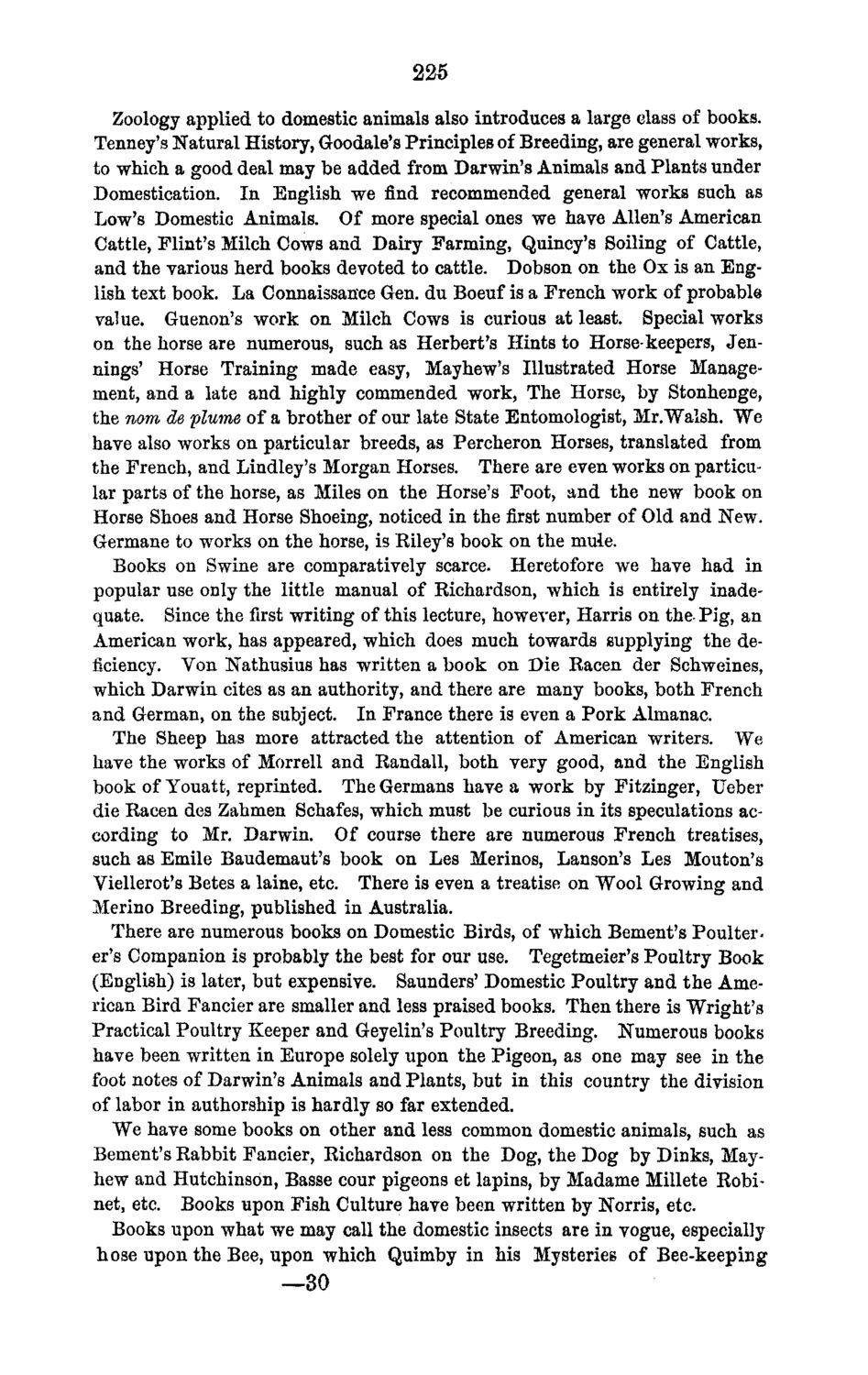| |
| |
Caption: Board of Trustees Minutes - 1870
This is a reduced-resolution page image for fast online browsing.

EXTRACTED TEXT FROM PAGE:
225 Zoology applied to domestic animals also introduces a large class of books. Tenney's Natural History, Goodale's Principles of Breeding, are general works, to which a good deal may be added from Darwin's Animals and Plants under Domestication. In English we find recommended general works such as Low's Domestic Animals. Of more special ones we have Allen's American Cattle, Flint's Milch Cows and Dairy Farming, Quincy's Soiling of Cattle, and the various herd books devoted to cattle. Dobson on the Ox is an English text book. La Connaissance Gen. du Boeuf is a French work of probable value. Guenon's work on Milch Cows is curious at least. Special works on the horse are numerous, such as Herbert's Hints to Horse-keepers, Jennings' Horse Training made easy, Mayhew's Illustrated Horse Management, and a late and highly commended work, The Horse, by Stonhenge, the nom de plume of a brother of our late State Entomologist, Mr.Walsh. We have also works on particular breeds, as Percheron Horses, translated from the French, and Lindley's Morgan Horses. There are even works on particular parts of the horse, as Miles on the Horse's Foot, and the new book on Horse Shoes and Horse Shoeing, noticed in the first number of Old and New. Germane to works on the horse, is Riley's book on the mule. Books on Swine are comparatively scarce. Heretofore we have had in popular use only the little manual of Richardson, which is entirely inadequate. Since the first writing of this lecture, however, Harris on the Pig, an American work, has appeared, which does much towards supplying the deficiency. Von Nathusius has written a book on Die Racen der Schweines, which Darwin cites as an authority, and there are many books, both French and German, on the subject. In France there is even a Pork Almanac. The Sheep has more attracted the attention of American writers. We have the works of Morrell and Randall, both very good, and the English book of Youatt, reprinted. The Germans have a work by Fitzinger, Ueber die Racen des Zahmen Schafes, which must be curious in its speculations according to Mr. Darwin. Of course there are numerous French treatises, such as Emile Baudemaut's book on Les Merinos, Lanson's Les Mouton's Viellerot's Betes a laine, etc. There is even a treatise on Wool Growing and Merino Breeding, published in Australia. There are numerous books on Domestic Birds, of which Bement's Poulter. er's Companion is probably the best for our use. Tegetmeier's Poultry Book (English) is later, but expensive. Saunders' Domestic Poultry and the American Bird Fancier are smaller and less praised books. Then there is Wright's Practical Poultry Keeper and Geyelin's Poultry Breeding. Numerous books have been written in Europe solely upon the Pigeon, as one may see in the foot notes of Darwin's Animals and Plants, but in this country the division of labor in authorship is hardly so far extended. We have some books on other and less common domestic animals, such as Bement's Rabbit Fancier, Richardson on the Dog, the Dog by Dinks, Mayhew and Hutchinson, Basse cour pigeons et lapins, by Madame Millete Robi* net, etc. Books upon Fish Culture have been written by Norris, etc. Books upon what we may call the domestic insects are in vogue, especially hose upon the Bee, upon which Quimby in his Mysteries of Bee-keeping —30
| |